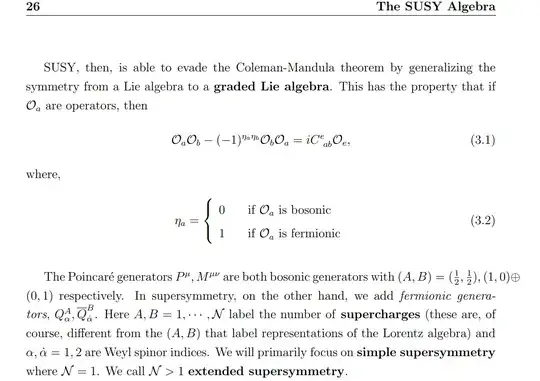So, I have been reading Lecture notes on "Supersymmetry and Extra Dimensions" (PDF), taken by Flip Tanedo (notes of the course of SUSY and Extra Dimension taken by Professor Quevedo, Cambridge Uni). In the notes, graded Lie algebra was introduced, it was mentioned that Poincare generators are Bosonic generators. I do not understand how exactly they are commenting that and also I do not understand the $(A,B)$ representation given for the generators. I thought it was only $(1/2, 0)$ direct sum $(0, 1/2)$
I have attached the page for reference.
P.S. I have been following the Lectures by Professor Quevedo, but these things were not mentioned, and since I am a beginner to the subject, a lot of things are quite confusing from time to time.
